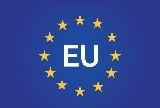The Land Management for Sustainability (LAMASUS) Project kicks off today and will provide tools and design processes allowing EU policymakers to assess the impacts of future land-use policies ahead of their implementation, and so make informed choices for European agriculture and land use, as well as the global climate.
As part of the European Green Deal, and in line with European Climate Law, the EU has set itself a binding target of achieving climate neutrality by 2050. The land use sector can play a key role in achieving these goals as it has more potential for carbon sequestration than any other sector - it is in fact already removing 7% of all EU emissions.
Using land to capture carbon is not an easy option - land as a resource is subject to heavy competition to provide food security, preserve biodiversity, and accommodate living space as well as infrastructure. EU policies that prioritize one use over others need to be carefully designed in an integrated approach accounting for diverse societal demands and the synergies and trade-offs among them.
Apart from providing tools and design processes that will allow EU policymakers to assess the impacts of future policies ahead of their implementation, LAMASUS will develop a novel governance model based on multi-level stakeholder dialogues spanning the European Commission, through national and local administrations down to citizens, as well as the necessary tools for co-designing agriculture, forestry, and climate policies in support of the EU's climate neutrality target.
"We recognize that decisions on how land is used are made at the local, regional, national, and EU level. These decisions are informed by their impacts on climate change, food security, biodiversity, and agricultural income. All of these policies are particularly relevant and require the necessary scientific tools to lay out long-term policies in the current economic situation," explains Tamás Krisztin, scientific coordinator of the LAMASUS project and a researcher in the IIASA Integrated Biosphere Futures Research Group.
The project brings together 17 research institutions from eight EU countries, and builds on established modeling tools that are used to predict the impacts of climate, agricultural, and forestry policies, at the local, national, and regional levels.
At the project kick-off meeting, which will be hosted by IIASA from 12-14 October, the partners will discuss how the project can address current challenges to policymakers in the EU and draw up a road map for the first year of the LAMASUS Project.
To ensure that the project meets the EU's policy needs, representatives from five different departments of the European Commission, as well as noted experts in land use and agricultural policy have been invited to join the meeting and oversee the project's progress in the form of a Policy Advisory Board.
"LAMASUS will create a new level of societal engagement in which local actors contribute to the design of effective and efficient EU policies for climate neutrality and serve as an exemplar for other policy processes within the European Green Deal," concludes LAMASUS principal investigator and IIASA Integrated Biosphere Futures Research Group Leader, Petr Havlík.
 © EU
© EU
This project has received funding from the European Union's Horizon Europe Research and Innovation programme under Grant Agreement No 101060423. The information and views set out in this deliverable are those of the author(s) and do not necessarily reflect the official opinion of the European Union. Neither the European Union institutions and bodies nor any person acting on their behalf may be held responsible for the use which may be made of the information contained therein.
 © LAMASUS
© LAMASUS






